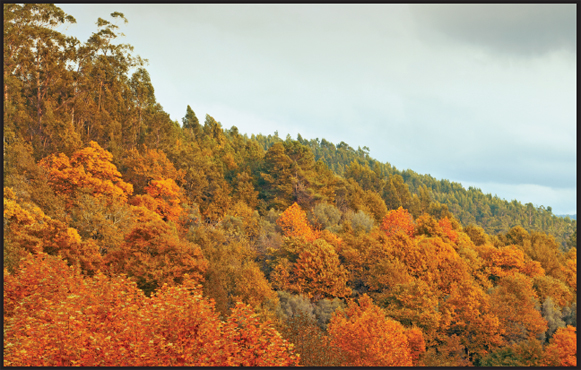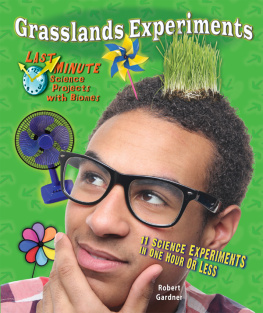Science Projects, Just in Time!
Have you waited until the last minute to start your science project? Dont worry, award-winning author Robert Gardner has you covered! Most of these experiments about the temperate forest biome can be done in an hour or less. There are some longer experiments for the budding scientist and ideas for science fair projects in case you have more time!
This creative series tackles science concepts that are important for students to learn in a simplified and meaningful way.
Helen Hess, PhD, Series Science Consultant
Professor of Biology
College of the Atlantic
Bar Harbor, Maine
About The Author
Robert Gardner is an award-winning author of science books for young people. He is a retired high school teacher of physics, chemistry, and physical science. In 2010, he received the Lifetime Achievement Award in Hands-On Science Writing from AAAS/Subaru Science Books & Films.

If you have a science project that is due soon, maybe tomorrow, this book will help you. It has experiments about temperate forest biomes. Many of the experiments can be done in less than one hour. An estimate of the time needed is given for each experiment. Even if you have plenty of time to prepare for your next science project or science fair, you can use and enjoy this book.
Most experiments are followed by a Keep Exploring section. There you will find ideas for more science projects. The details are left to you, the young scientist. You can design and carry out your own experiments, under adult supervision, when you have more time.
For some experiments, you may need a partner to help you. Work with someone who likes to do experiments as much as you do. Then you will both enjoy what you are doing. In this book, if any safety issues or danger is involved in doing an experiment, you will be warned. In some cases you will be asked to work with an adult. Please do so. Dont take any chances that could lead to an injury.
A biome is a region of the earth with a particular climate. The plants and animals that live in a biome are quite similar all around the world. This book is about temperate forest biomes. But there are other biomes. Earths biomes include deserts, tundra, taiga, grasslands, rain forests, and temperate forests.
A temperate forest contains both evergreen and deciduous trees. (Deciduous trees lose their leaves in the winter.) Broad-leafed deciduous trees, such as maples, oaks, hickory, ash, and beech, are common in a temperate forest. The winters are cold and the summers are warm. In winter, the leafless trees do not grow. Without their leaves, trees lose very little water. Growth occurs during the warmer months when leaves are present. It is in the chlorophyll-rich leaves that photosynthesis takes place. Photosynthesis is the process by which plants make food. Leaf cells, using chlorophyll as a catalyst, combine carbon dioxide and water to make food for the plant.

Image Credits: Shutterstock.com: cristovao
Forests are filled with deciduous trees. The leaves turn colors in the fall and then drop from the trees.
In the fall, as the air cools, the green chlorophyll slowly diminishes. The other pigmentsreds, yellows, and orangesappear. The woodlands glow with color in the autumn sun.
Typically, precipitation falls throughout the year in a temperate forest. With plenty of moisture, shrubs and plants grow beneath the trees. Deeper still, the trees roots penetrate a moist soil rich in minerals and organic matter supplied by decaying leaves. On the forest floor, and in the trees above, a variety of animals make their homes. There are birds, deer, squirrels, raccoons, opossums, foxes, black bears, rodents, and other animals. Many amphibians, reptiles, and insects also make their home in this biome.
During the winter, some of the forest animalsbats, woodchucks, mice, turtles, and bearshibernate. They spend the cold months sleeping in caves, dens, or burrows. Their metabolism, heart, and breathing rates all decrease. This reduces their need for food as they snooze the winter away. Their only source of nourishment comes from the fat they develop during an autumn of feasting. Other animals endure the winter by eating berries, nuts, tree bark, twigs, buds, and an assortment of small life forms.
To survive, forest plants and animals require lots of water. A temperate forest receives 30 to 80 inches (75 to 200 cm) of rain per year. The moisture keeps forest humidity at 60 to 80 percent. Unlike a desert biome, the high concentration of moist air is an insulator. It deters heat from entering and leaving the biome. A deserts dry air leads to blistering hot days and chilly nights. But temperatures in a temperate forest insulated by humidity do not fluctuate greatly from day to night.
As the word temperate indicates, temperate forests are found in the earths temperate zone. The northern temperate zone extends from the Tropic of Cancer (latitude 23.5 north) to the Arctic Circle (66.5 north). A similar zone exists south of the Tropic of Capricorn. But very little deciduous forest is found in the Southern Hemisphere. A look at a world map shows why. Not much land lies south of the Tropic of Capricorn (23.5 south).
There is a large temperate forest in the United States. It extends from a bit west of the Great Lakes eastward to the Atlantic Ocean and southward to the Gulf of Mexico. When the Pilgrims landed in 1620, there were more than a billion acres of forest in what is now the United States. Three hundred years later, one fourth of the trees had been cleared for farming and lumber. Since then, efforts to conserve our temperate forests have added 7.5 million acres of forest.
A temperate forest is layered. Tall trees, such as oaks, maples, hickories, and poplars, form the forests canopy (roof). Shorter trees form a second shorter layer, the understory. Near the forest floor, we find shrubs such as witch hazel and spice bush. Finally, there is an herb layer containing mushrooms, wild flowers, and other small plants. The floor is covered with dead leaves. The leaves decompose into the minerals and organic matter of the forest soil.

Image Credits: Thinkstock: Lightwriter1949/ iStock
Deer are one of the animals found in the temperate forest.
To do experiments the way scientists do, you need to know about the scientific method. It is true that scientists in different areas of science use different ways of experimenting. Depending on the problem, one method is likely to be better than another. Designing a new medicine for heart disease and finding evidence of water on Mars require different kinds of experiments.
Despite these differences, all scientists use a similar approach as they experiment. It is called the scientific method. In most experimenting, some or all of the following steps are used: making an observation, coming up with a question, creating a hypothesis (a possible answer to the question) and a prediction (an if-then statement), designing and conducting an experiment, analyzing results, drawing conclusions about the prediction, and deciding if the hypothesis is true or false.
Scientists share the results of their experiments by writing articles that are published in science journals.
You might wonder how you can use the scientific method. You begin when you see, read, or hear about something in the world that makes you curious. So you ask a question. To find an answer, you do a well-designed investigation; you use the scientific method.





















